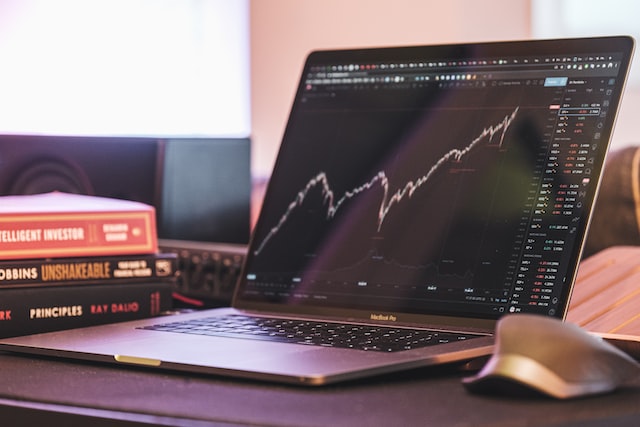
Day trading is an investment strategy which can be profitable for those who know what they're doing. However, the stock market is unpredictable and risky, so it's important to learn how to trade properly before you put real money on the line.
Daily Stock Trading Advice
Most successful day traders have a plan in place and don't make emotional decisions. For those who are just starting out in day trading it is best to first practice with a trial account. It will let you test different trading strategies and market conditions before you risk your money.
Use a List of Commodities, ETFs, Bonds and Shares to Create a Watchlist
As you begin, it is a good idea for you to concentrate on only a few stocks per session. This will allow you to better track the price movement and identify possible opportunities. This method is much more efficient than trading dozens or hundreds of shares all at once.

Doing so will help to minimize your losses and keep you on top the markets. It will prevent you getting caught in a whirlwind that includes small zigzags.
Keep your eyes open and read as much of the book as you can
You may be tempted to jump into the market in a hurry, but it's important to keep an eye out for any big news that might affect your investments. A merger, new executives, or even political scandals could be the cause.
A day trader must monitor all open orders and their working orders in order to identify potential problems. They should then monitor their accounts and make sure they have enough funds to cover any losses.
Choose Entry Points without Emotion
When day trading, it's important to be able to decide when to buy or sell a stock. This is done by choosing an entry point that meets your research-based trading strategy. If you choose the right entry point, it can be one of the most critical factors in your success.

Do not over-leverage the account
Investing too much money in a single trade can lead to disastrous results. Many successful day-traders only invest 1% their account balance on each trade. This way, you won't be overly exposed to risk. And you can also see what returns you could achieve by sticking to your plan.
Avoid Getting Swung by a Wrong Trend
In day trading, it's important to identify a trend that has been in place for some time. You should also look for the initial retracement or pullback to either its primary upward trend line or moving average so you can enter at these levels.
Fade: Another strategy is to short a stock that has a prevailing uptrend. It's risky and goes against traditional wisdom, but can be an effective way to capitalize on a strong trend.
FAQ
How does inflation affect the stock market
Inflation affects the stock markets because investors must pay more each year to buy goods and services. As prices rise, stocks fall. It is important that you always purchase shares when they are at their lowest price.
What are the benefits to owning stocks
Stocks are less volatile than bonds. The stock market will suffer if a company goes bust.
The share price can rise if a company expands.
Companies usually issue new shares to raise capital. This allows investors buy more shares.
To borrow money, companies can use debt finance. This gives them access to cheap credit, which enables them to grow faster.
A company that makes a good product is more likely to be bought by people. The stock's price will rise as more people demand it.
Stock prices should rise as long as the company produces products people want.
Why are marketable securities important?
An investment company exists to generate income for investors. It does this through investing its assets in various financial instruments such bonds, stocks, and other securities. These securities have certain characteristics which make them attractive to investors. These securities may be considered safe as they are backed fully by the faith and credit of their issuer. They pay dividends, interest or both and offer growth potential and/or tax advantages.
It is important to know whether a security is "marketable". This is how easy the security can trade on the stock exchange. You cannot buy and sell securities that aren't marketable freely. Instead, you must have them purchased through a broker who charges a commission.
Marketable securities include government and corporate bonds, preferred stocks, common stocks, convertible debentures, unit trusts, real estate investment trusts, money market funds, and exchange-traded funds.
These securities can be invested by investment firms because they are more profitable than those that they invest in equities or shares.
What is an REIT?
A real-estate investment trust (REIT), a company that owns income-producing assets such as shopping centers, office buildings and hotels, industrial parks, and other buildings is called a REIT. These are publicly traded companies that pay dividends instead of corporate taxes to shareholders.
They are similar companies, but they own only property and do not manufacture goods.
What is the difference in the stock and securities markets?
The entire list of companies listed on a stock exchange to trade shares is known as the securities market. This includes stocks as well options, futures and other financial instruments. Stock markets can be divided into two groups: primary or secondary. Stock markets are divided into two categories: primary and secondary. Secondary stock markets let investors trade privately and are smaller than the NYSE (New York Stock Exchange). These include OTC Bulletin Board Over-the-Counter and Pink Sheets as well as the Nasdaq smallCap Market.
Stock markets are important as they allow people to trade shares of businesses and buy or sell them. The value of shares is determined by their trading price. New shares are issued to the public when a company goes public. Dividends are received by investors who purchase newly issued shares. Dividends are payments that a corporation makes to shareholders.
Stock markets not only provide a marketplace for buyers and sellers but also act as a tool to promote corporate governance. Shareholders elect boards of directors that oversee management. Managers are expected to follow ethical business practices by boards. The government can replace a board that fails to fulfill this role if it is not performing.
Statistics
- US resident who opens a new IBKR Pro individual or joint account receives a 0.25% rate reduction on margin loans. (nerdwallet.com)
- The S&P 500 has grown about 10.5% per year since its establishment in the 1920s. (investopedia.com)
- "If all of your money's in one stock, you could potentially lose 50% of it overnight," Moore says. (nerdwallet.com)
- Ratchet down that 10% if you don't yet have a healthy emergency fund and 10% to 15% of your income funneled into a retirement savings account. (nerdwallet.com)
External Links
How To
How to Trade on the Stock Market
Stock trading can be described as the buying and selling of stocks, bonds or commodities, currency, derivatives, or other assets. The word "trading" comes from the French term traiteur (someone who buys and sells). Traders trade securities to make money. They do this by buying and selling them. It is one of the oldest forms of financial investment.
There are many methods to invest in stock markets. There are three types of investing: active (passive), and hybrid (active). Passive investors simply watch their investments grow. Actively traded traders try to find winning companies and earn money. Hybrids combine the best of both approaches.
Passive investing is done through index funds that track broad indices like the S&P 500 or Dow Jones Industrial Average, etc. This is a popular way to diversify your portfolio without taking on any risk. You can just relax and let your investments do the work.
Active investing means picking specific companies and analysing their performance. The factors that active investors consider include earnings growth, return of equity, debt ratios and P/E ratios, cash flow, book values, dividend payout, management, share price history, and more. Then they decide whether to purchase shares in the company or not. If they feel that the company's value is low, they will buy shares hoping that it goes up. However, if they feel that the company is too valuable, they will wait for it to drop before they buy stock.
Hybrid investing combines some aspects of both passive and active investing. One example is that you may want to select a fund which tracks many stocks, but you also want the option to choose from several companies. This would mean that you would split your portfolio between a passively managed and active fund.